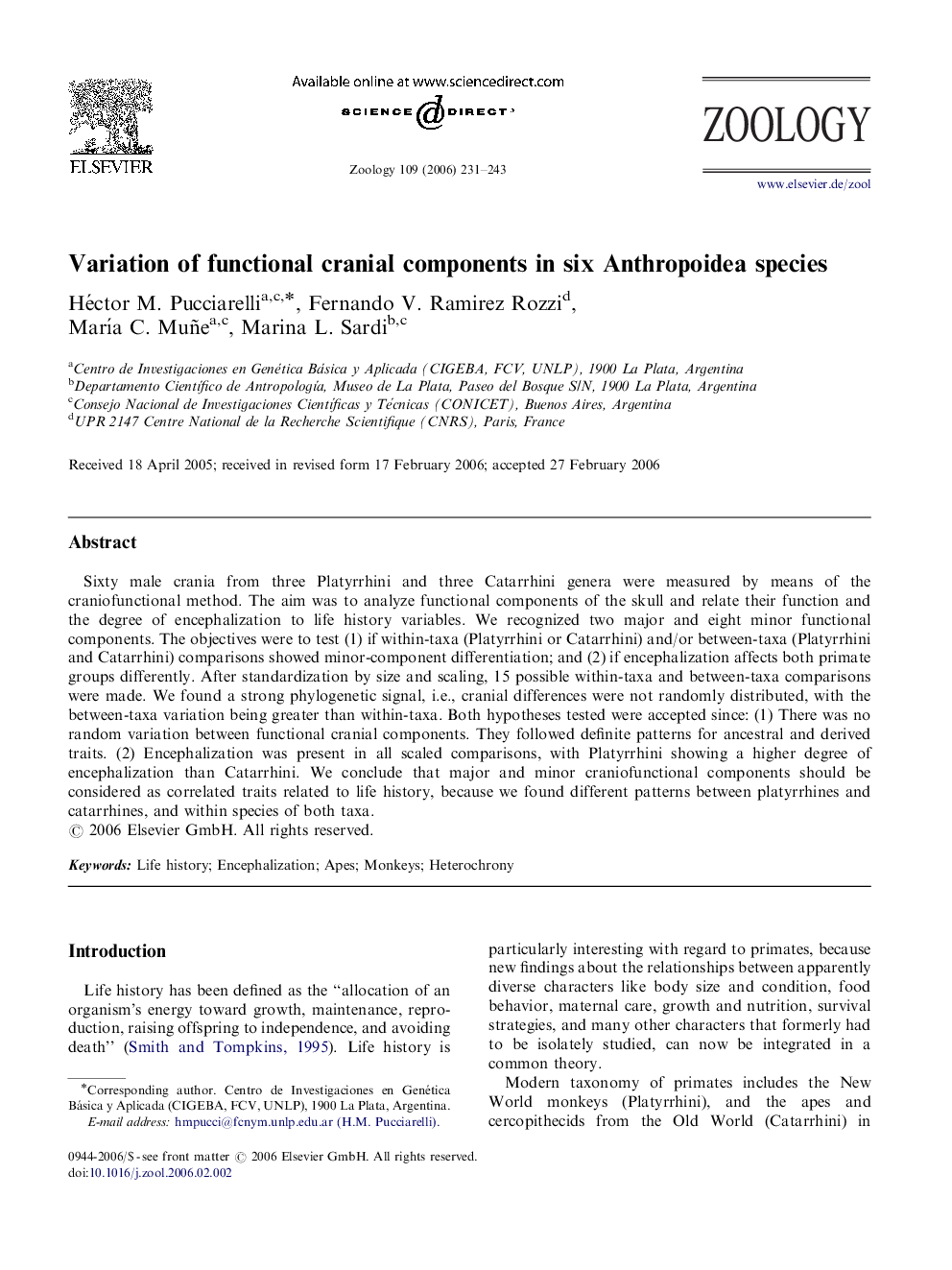| Article ID | Journal | Published Year | Pages | File Type |
|---|---|---|---|---|
| 2791378 | Zoology | 2006 | 13 Pages |
Sixty male crania from three Platyrrhini and three Catarrhini genera were measured by means of the craniofunctional method. The aim was to analyze functional components of the skull and relate their function and the degree of encephalization to life history variables. We recognized two major and eight minor functional components. The objectives were to test (1) if within-taxa (Platyrrhini or Catarrhini) and/or between-taxa (Platyrrhini and Catarrhini) comparisons showed minor-component differentiation; and (2) if encephalization affects both primate groups differently. After standardization by size and scaling, 15 possible within-taxa and between-taxa comparisons were made. We found a strong phylogenetic signal, i.e., cranial differences were not randomly distributed, with the between-taxa variation being greater than within-taxa. Both hypotheses tested were accepted since: (1) There was no random variation between functional cranial components. They followed definite patterns for ancestral and derived traits. (2) Encephalization was present in all scaled comparisons, with Platyrrhini showing a higher degree of encephalization than Catarrhini. We conclude that major and minor craniofunctional components should be considered as correlated traits related to life history, because we found different patterns between platyrrhines and catarrhines, and within species of both taxa.
